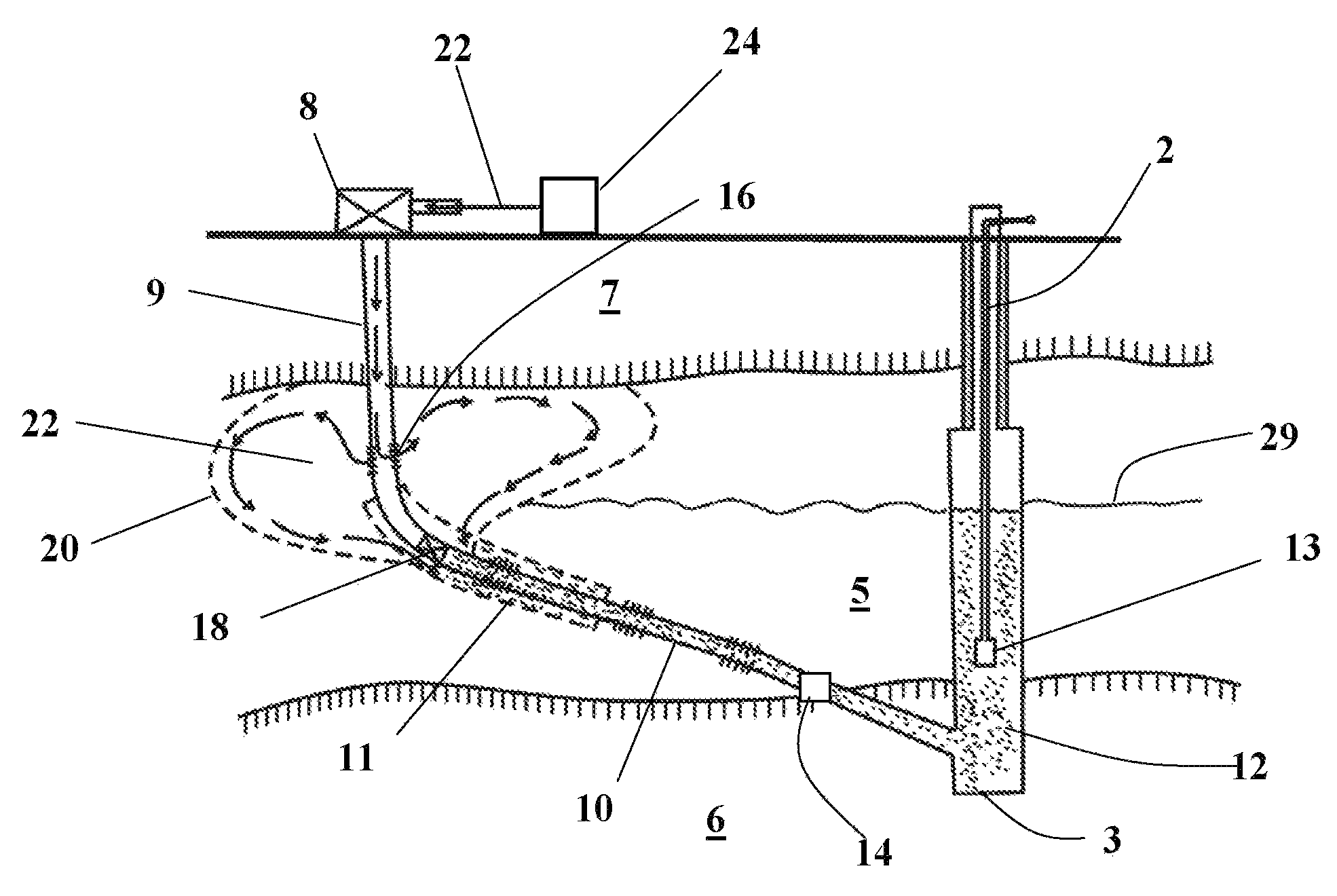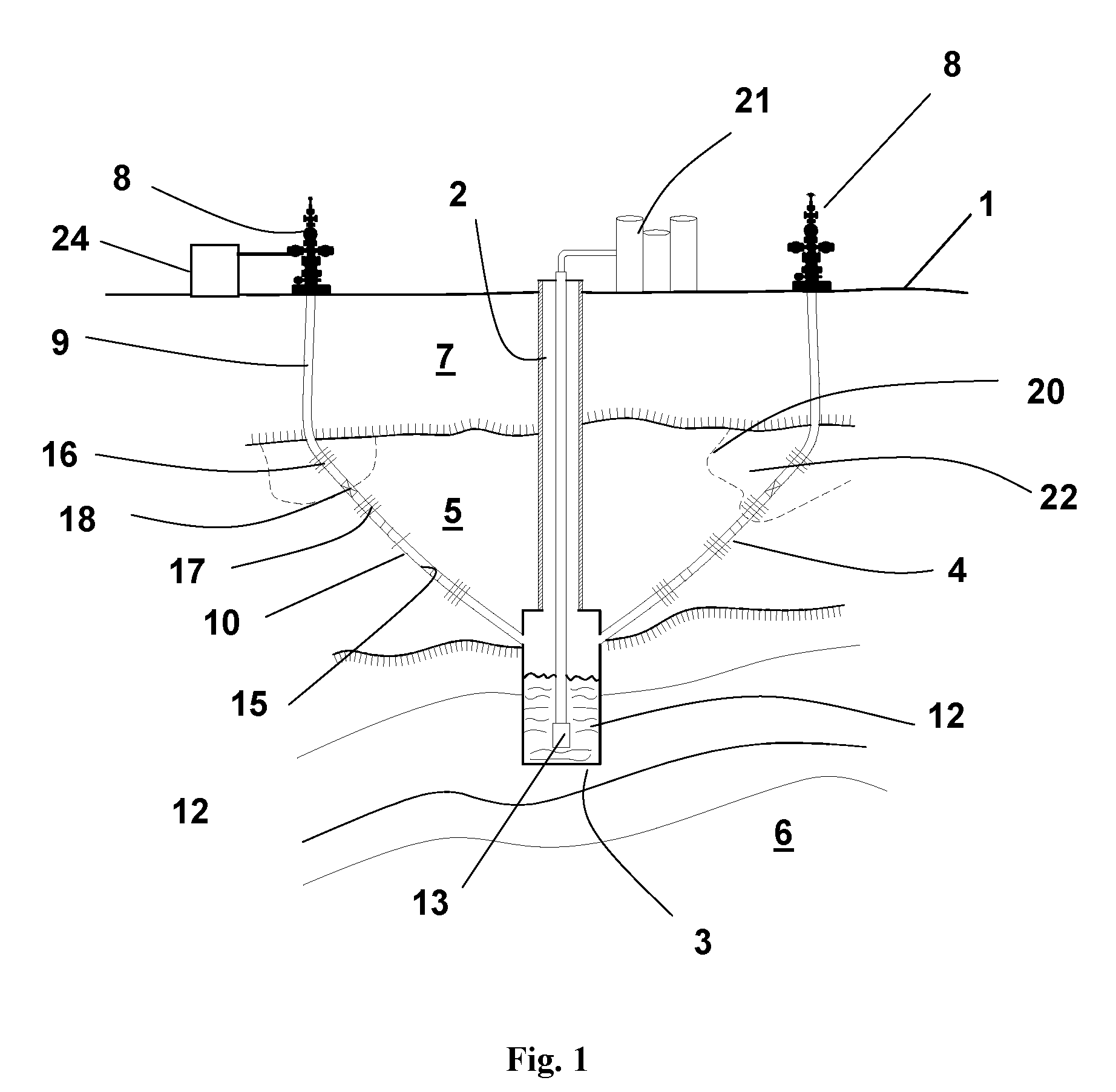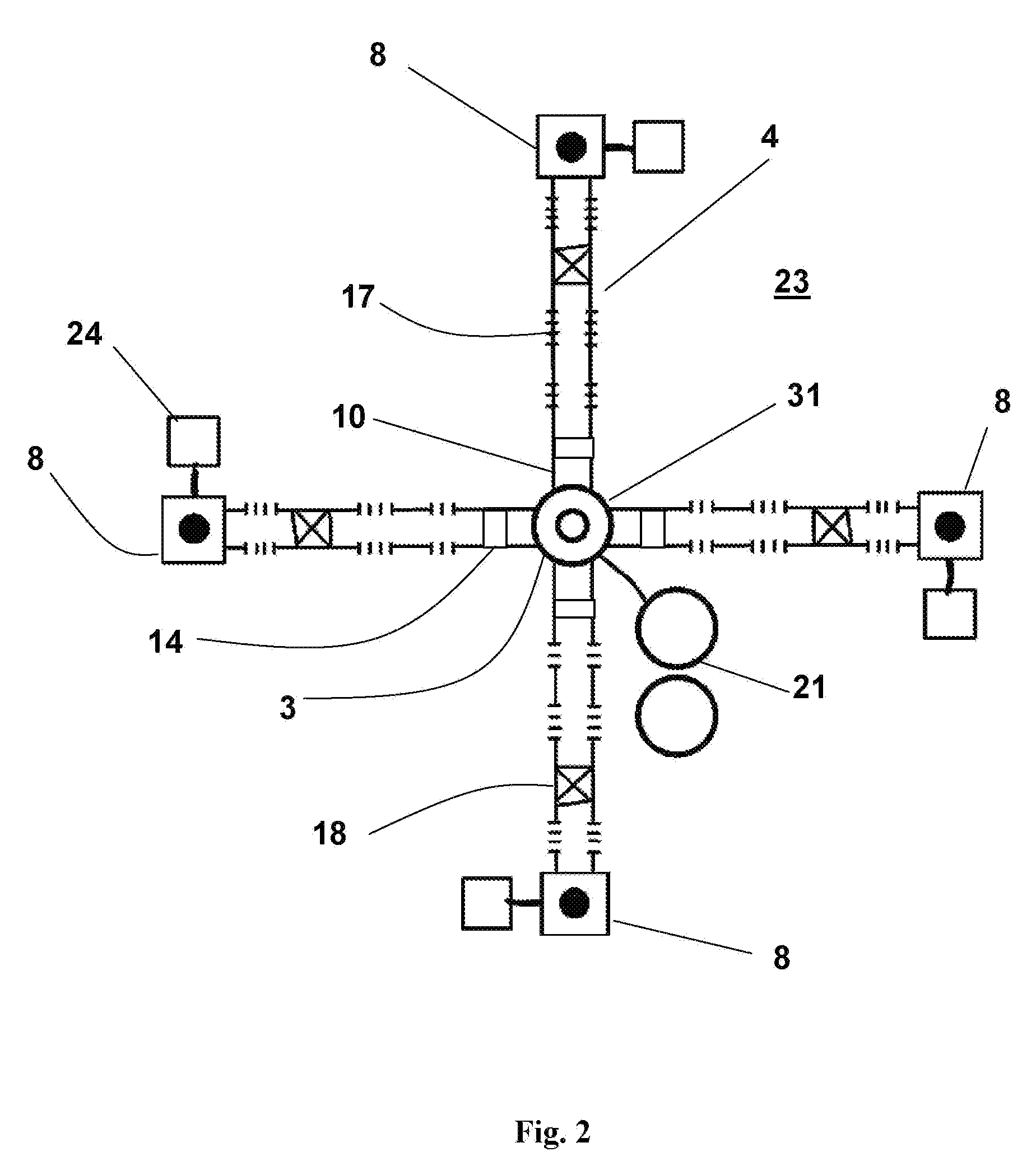Petroleum extraction from hydrocarbon formations
a hydrocarbon formation and petroleum extraction technology, applied in the direction of drinking water installation, borehole/well accessories, construction, etc., to achieve the effect of improving fluid displacemen
- Summary
- Abstract
- Description
- Claims
- Application Information
AI Technical Summary
Benefits of technology
Problems solved by technology
Method used
Image
Examples
Embodiment Construction
[0086]Referring now to the drawings the new invention process is described as follows. Referring to FIG. 1 and FIG. 10, a central wellbore 2 is drilled from the surface of the ground 1 down to and passing through the hydrocarbon bearing formation 5 as shown in step 100. The central wellbore is under-reamed by using a reamer tool to provide a large cavity 3 up to as much as 8 feet in radius and several feet deep as indicated in step 101. Oilfield tools provided by Ref. 2. are capable of performing this operation routinely. After the central well 2 is drilled and under-reamed it forms a production cavity 3 at its bottom. This production cavity can hold several hundred barrels of hot oil and condensed water. For example., a 6-foot radius cavity that is 20 feet high can hold in excess of 1,000 barrels of fluid. This volume can be about a one-week fluid production volume from a typical shallow stimulated steam well. As shown in step 102 a series of uniwells 4 are drilled from the surface...
PUM
 Login to View More
Login to View More Abstract
Description
Claims
Application Information
 Login to View More
Login to View More - R&D
- Intellectual Property
- Life Sciences
- Materials
- Tech Scout
- Unparalleled Data Quality
- Higher Quality Content
- 60% Fewer Hallucinations
Browse by: Latest US Patents, China's latest patents, Technical Efficacy Thesaurus, Application Domain, Technology Topic, Popular Technical Reports.
© 2025 PatSnap. All rights reserved.Legal|Privacy policy|Modern Slavery Act Transparency Statement|Sitemap|About US| Contact US: help@patsnap.com



